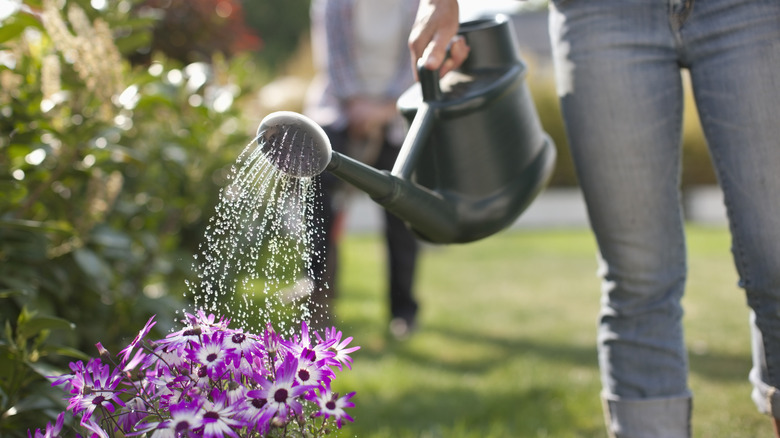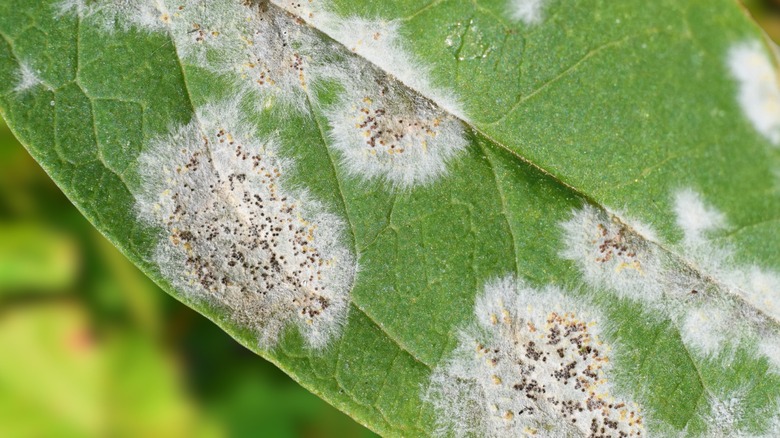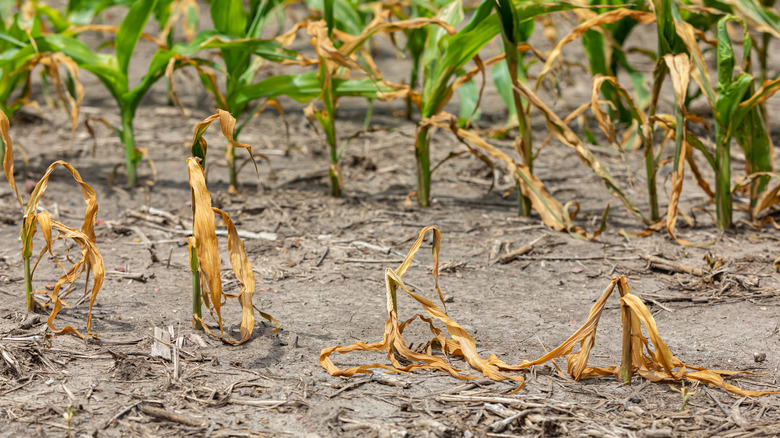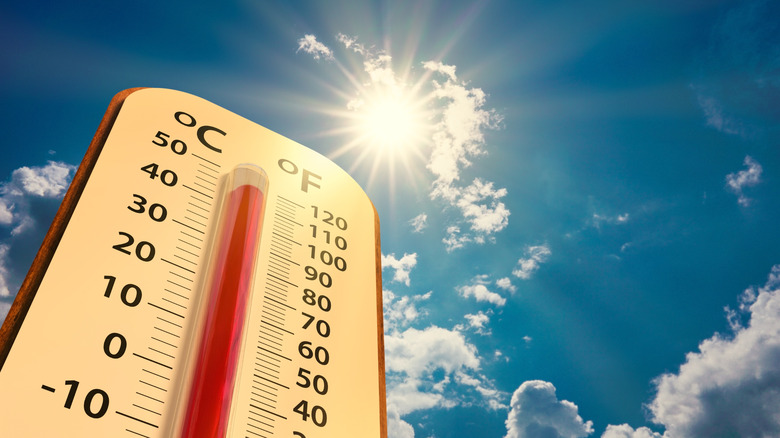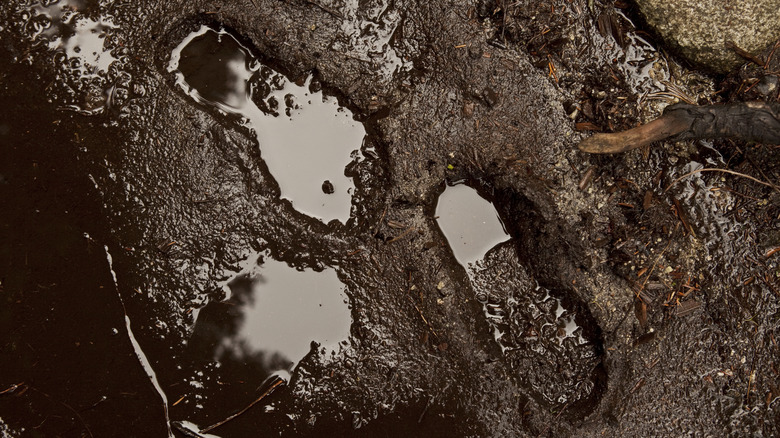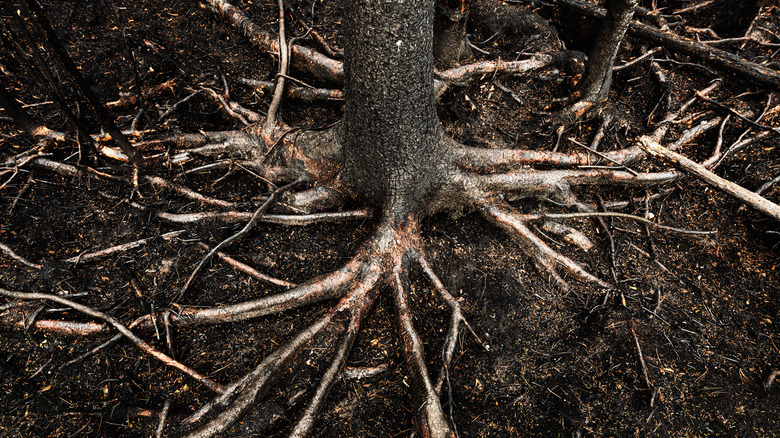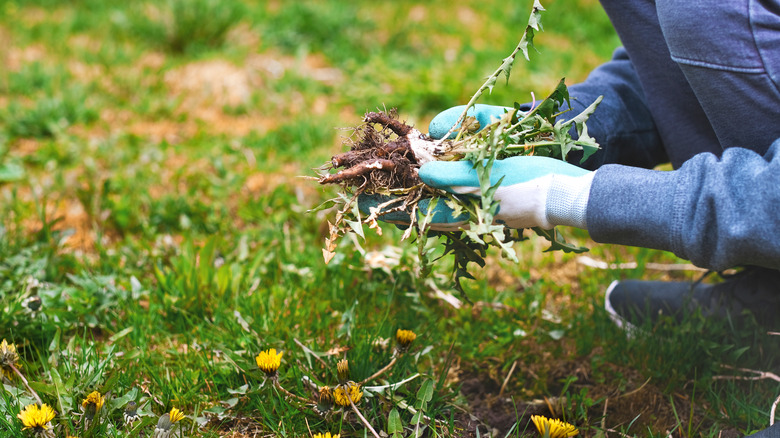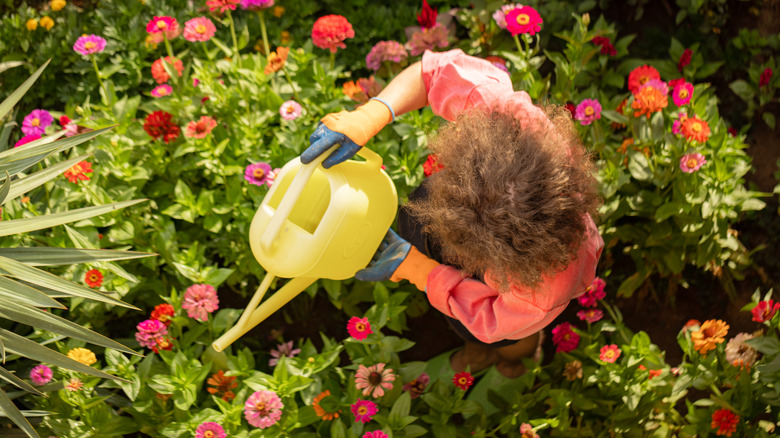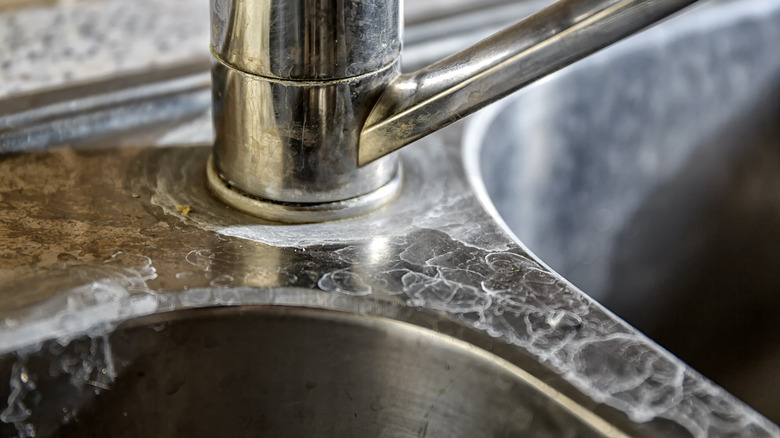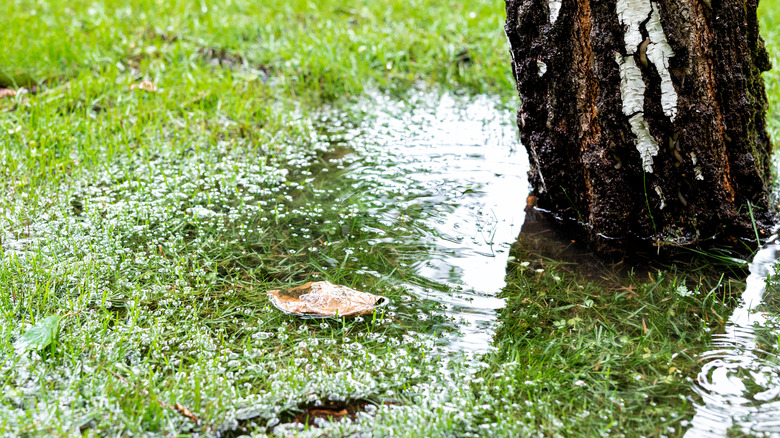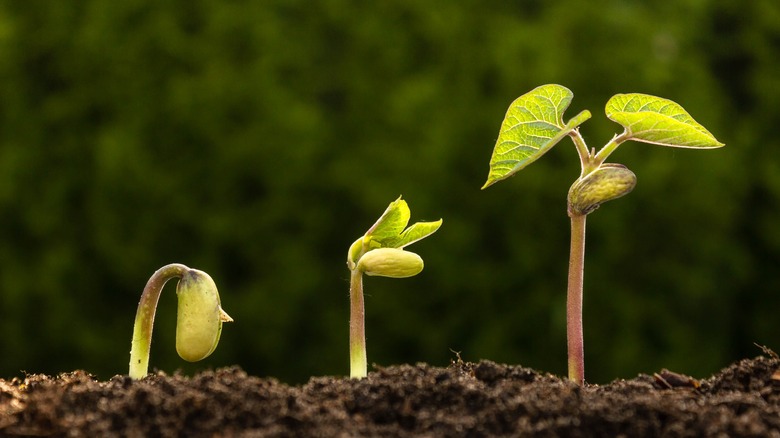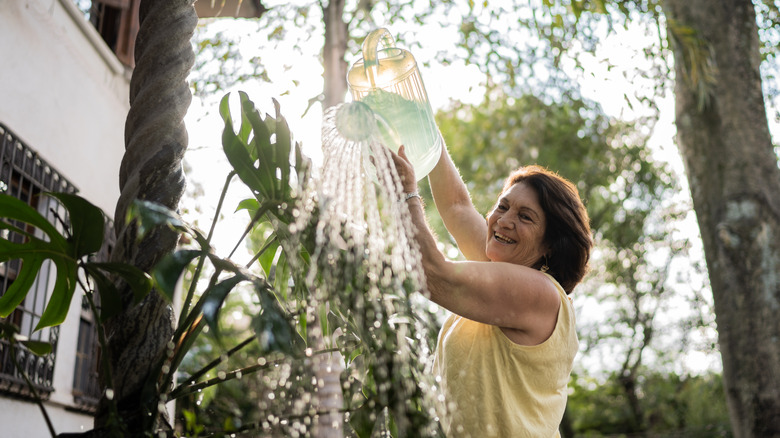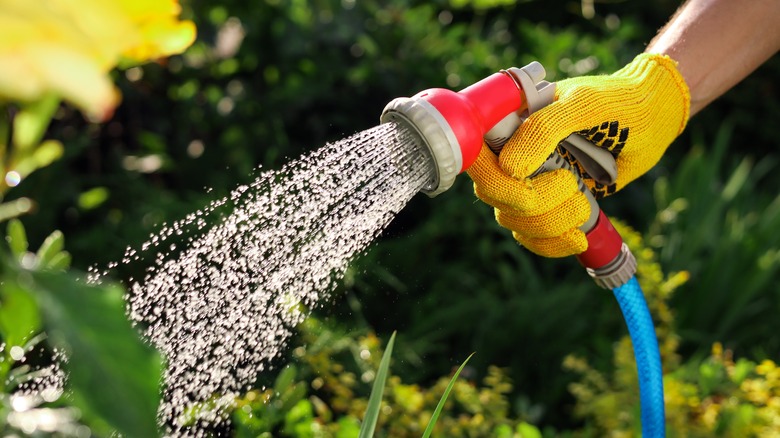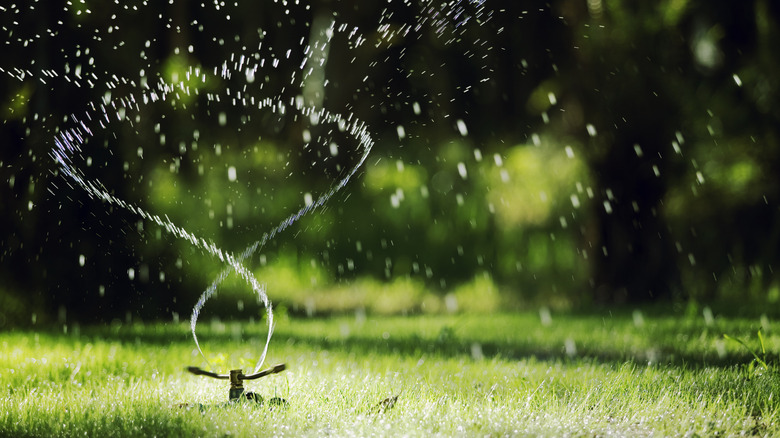Major Mistakes You Need To Avoid When Watering Your Garden
Gardening is a venture that promises enchanting colors, scents, and textures woven by nature's hand. For beginners, this journey often begins with earnest enthusiasm fueled by visions of verdant landscapes and thriving blooms. However, as any seasoned gardener will attest, amidst the verdant allure lies a crucial aspect that can make or break the botanical haven you aspire to create: watering. Though seemingly simple, incorrect watering practices are among the myriad mistakes that beginner gardeners often make.
From the delicate dance of moisture levels to the art of timing and technique, watering demands a mindful approach to ensure the optimal health and vitality of your green companions. For novice gardeners, navigating the labyrinth of watering dos and don'ts can be a daunting task, fraught with potential pitfalls. Indeed, many unwittingly stumble into common mistakes that can undermine their gardening endeavors, from overzealous watering that drowns tender seedlings to erratic watering schedules that leave plants thirsting for sustenance.
In this comprehensive guide, we'll shed light on the major mistakes that often befall gardeners. Armed with this knowledge, you will be able to cultivate a garden oasis that flourishes with vitality and abundance. So, grab your watering can, don your gardening gloves, and join us as we embark on a journey to discover the essential don'ts of watering.
Overwatering
Overwatering, though often done with the best intentions, can have detrimental effects on garden plants. While water is essential for plant growth and development, watering for too long, or even twice a day, can contribute to excessive moisture in the soil that leads to a cascade of negative consequences for your garden.
One of the most significant dangers of overwatering is root suffocation. Excess water fills air pockets in the soil, displacing oxygen. Without oxygen, roots suffocate and begin to rot (via Missouri Botanical Garden). Since rotten roots cannot effectively take up water, overwatering paradoxically causes plants to wilt due to insufficient oxygen and nutrient uptake. As such, overwatered plants often exhibit stunted growth. This results in diminished overall plant vigor, with smaller leaves, shorter stems, and reduced fruit or flower production. Sometimes, due to the excess amount of water, plants can swell (a condition known as edema). Edema occurs when plant cells absorb water faster than they can expel it, leading to the formation of blisters or lesions on leaves and stems. These abnormal growths disrupt cellular function and weaken the plant's overall health. Prolonged moisture also creates a breeding ground for harmful insects, pests, and pathogens. These pathogens can quickly spread throughout the garden, causing widespread damage to plants.
Gardeners should be vigilant for these signs of overwatering and adjust their watering practices accordingly. Allowing the soil to partially dry out between waterings can prevent the detrimental effects of overwatering and promote healthier, more resilient plants in the garden.
Underwatering
Underwatering, like overwatering, can have significant negative consequences for garden plants. Insufficient water supply can lead to stress, wilting, and, ultimately, plant death, according to Plantin.
The most apparent sign of underwatering is wilting. When plants do not receive enough water, they lose turgidity, causing their leaves and stems to droop. In response to water stress, plants may shed their leaves as a survival mechanism to conserve water. While some leaf drop is natural, excessive leaf loss indicates prolonged water deficiency and can lead to weakened overall plant health. In severe cases, wilting may progress to the point of irreversible damage or death. Alternatively, leaves may turn yellow or brown and become crispy when plants are underwatered. This occurs because, without adequate water, plants cannot perform essential physiological processes such as photosynthesis, leading to leaf discoloration and tissue damage. In desperate attempts to conserve water in their roots and stems, plants may drop flowers and fruits prematurely, too, another telltale sign of underwatering.
Insufficient water in the soil leads to dry, cracked soil that lacks moisture. Gardeners can check the soil moisture level by inserting their finger into the soil; if it feels dry to the touch several inches below the surface, it's likely that the plant needs watering.
Watering at the wrong time of day
Watering at the wrong time of day can have significant negative consequences for garden plants and overall water efficiency. The wrong time typically refers to the part of the day when temperatures are at their peak.
During the hottest part of the day, water evaporates rapidly. This means much of the water intended for plants' roots is lost to the atmosphere before it can be absorbed, leading to inefficient water use. Intriguingly, a 2010 study in New Phytologist found that droplets on plant foliage act as magnifying glasses, focusing sunlight and potentially scorching leaves. This can result in leaf damage, sunburn, and reduced plant health.
To mitigate these negative effects, gardeners should aim to water during cooler times of the day. This allows water to penetrate the soil effectively, minimizing loss through evaporation and ensuring optimal absorption by plant roots. Southern Living Plant Collection recommends early morning or evening when temperatures are cooler, sunlight is less intense, and evaporation rates are lower, but the exact time may differ in your geographic region. Watering at night may be an enticing option, especially during humid summer months, but it may consume more energy if artificial lighting is required to illuminate your garden whilst out in the dark.
Ignoring soil moisture levels
Ignoring soil moisture levels can have detrimental consequences for plants, as this lack of understanding can lead to overwatering or underwatering. According to Greenway Biotech, these practices can directly impact nutrient availability to plants, as waterlogged soil can inhibit the absorption of essential nutrients, while dry soil may limit nutrient solubility and availability to plant roots. Inconsistent soil moisture levels can hinder proper root development, as plants may struggle to establish deep and robust root systems in overly wet or dry soil. Poor root development compromises plants' ability to anchor themselves securely, making them more susceptible to environmental stressors.
To effectively manage soil moisture levels, gardeners can visually assess soil moisture levels by observing the appearance and feel of the soil. Dry soil will appear lighter in color and feel crumbly, while wet soil will appear darker and feel moist or muddy. Alternatively, they are affordable and convenient tools that provide instant readings of soil moisture levels. These meters typically consist of a probe that is inserted into the soil, with readings displayed on a dial or digital screen.
While the measures mentioned for understanding soil moisture levels are generally useful for most garden plants, it's essential to acknowledge that different plants have varying watering needs based on factors such as species, stage of growth, soil type, climate, and environmental conditions. Therefore, gardeners should interpret and apply them in conjunction with their knowledge of specific plant requirements.
Watering inconsistently
Unlike underwatering or overwatering, which involve extremes in soil moisture levels, inconsistent watering involves irregular fluctuations between wet and dry conditions. Inconsistent watering can lead to erratic fluctuations in soil moisture levels, causing plant roots to expand and contract rapidly, according to a 2022 analysis by Frontiers in Plant Science. These fluctuations stress roots and can lead to root damage, including root desiccation, rot, and loss of fine root hairs essential for nutrient absorption. Erratic fluctuations in soil moisture levels also inhibit plants' ability to access water and nutrients consistently. This can result in stunted growth as plants divert energy away from growth processes to cope with water stress and adjust to changing conditions.
Over time, plants subjected to inconsistent watering experience increased stress as they struggle to cope with fluctuating moisture levels. Stressed plants are more susceptible to pest infestations and diseases, as their weakened defenses make them easy targets for opportunistic invaders. Physiological disorders such as blight may become an issue (via Garden Answers). In addition, plants that experience inconsistent watering are less resilient to environmental stressors such as heat waves, drought, or cold snaps. Erratic moisture fluctuations weaken plants' ability to withstand adverse conditions, making them more vulnerable to damage or death.
To mitigate the negative consequences of inconsistent watering, gardeners should aim for a consistent watering routine that provides plants with adequate moisture levels to support healthy growth and development. This involves watering deeply and evenly and adjusting watering frequency based on environmental conditions and plant needs.
Shallow watering frequently
Shallow watering too frequently, while seemingly beneficial, can have detrimental consequences for garden plants. This watering practice involves applying small amounts of water frequently, resulting in moisture accumulation in the upper layers of soil while leaving deeper soil layers dry. Crow River Media states that shallow watering encourages plants to develop shallow root systems, as roots primarily grow where moisture is present. Shallow roots are less resilient and less efficient at absorbing water and nutrients from deeper soil layers. This makes plants more susceptible to drought stress, as they lack the deep roots necessary to access water during dry periods. In addition, plants may experience nutrient deficiencies, even if fertilizers are applied, as shallow roots cannot access nutrients beyond the surface layer of soil.
Moreover, shallow watering promotes weed growth, as weed seeds often germinate and thrive in the moist surface layer of soil. By providing a consistently moist environment near the soil surface, shallow watering creates ideal conditions for weed establishment and proliferation, competing with garden plants for resources.
Last, shallow watering too frequently wastes water resources, as much of the applied water evaporates from the soil surface before it can be absorbed by plant roots. This inefficiency contributes to water waste and increases water bills, especially in areas with limited water availability or drought restrictions.
Watering overhead
While it may seem convenient and efficient, watering overhead or watering plants from above can lead to various problems that compromise plant health and vitality. First, depending on the plant's foliage, the water may not even reach the soil under the plant, meaning the soil remains dry and the roots are unable to soak up moisture.
Overhead watering also creates a humid microenvironment around plant foliage, which can promote the development of fungal diseases such as powdery mildew, downy mildew, and leaf spot. Fungi thrive in moist conditions, and prolonged leaf wetness increases the likelihood of infection and spread throughout the garden. Beyond that, watering overhead can lead to significant water wastage (via House Digest), as much of the water evaporates before it reaches the soil or is absorbed by plant roots. Inefficient water use not only wastes a precious resource but also increases water bills and environmental impact.
A better watering technique that addresses these issues is drip irrigation or soaker hoses (via Eartheasy). Drip irrigation delivers water directly to the base of plants near the root zone through a system of tubing and emitters. This targeted approach ensures that water is delivered where it's needed most, minimizing evaporation and reducing the risk of leaf burn and fungal diseases. Soaker hoses, which emit water slowly along their length, are another effective option for watering plants at the root zone while conserving water.
Using hard water
Hard water contains high levels of dissolved minerals, particularly calcium and magnesium ions, according to Culligan, which can accumulate in the soil over time and lead to various problems. First, hard water can alter soil pH and nutrient availability, leading to nutrient imbalances that affect plant growth and health. For example, high levels of calcium and magnesium in hard water can displace other essential nutrients like potassium and phosphorus, causing deficiencies or toxicities in plants.
To mitigate the negative consequences of using hard water in gardening, gardeners can consider using alternative water sources or implementing water treatment methods. D&B Climate Care states that rainwater and distilled water are excellent alternatives to hard water, as they are naturally low in mineral content and free from contaminants. However, these water sources may not always be readily available or practical for use in gardening.
Another option is to treat hard water using water softeners or reverse osmosis systems to remove excess minerals before using it for gardening. Water softeners use ion exchange resins to replace calcium and magnesium ions with sodium ions, effectively softening the water. Reverse osmosis systems use a semipermeable membrane to remove dissolved minerals and impurities from water, producing high-quality water suitable for gardening. By choosing the best water source and implementing appropriate water treatment measures, gardeners can ensure optimal plant growth and soil health in their gardens.
Neglecting proper drainage
Proper drainage is essential for maintaining optimal soil moisture levels, preventing waterlogging, and promoting healthy root growth. When drainage is inadequate, excess water accumulates in the soil, leading to waterlogged conditions. This can displace air from the root zone, suffocating plant roots and inhibiting their ability to respire, per Pure Modern. Inadequate drainage also causes water to stagnate in the soil, leading to the leaching of essential nutrients such as nitrogen, potassium, and phosphorus (via LandCon). These nutrients are washed away with excess water, depriving plants of the nutrition they need for healthy growth and development.
To ensure proper drainage in gardens, GrowVeg recommends that gardeners incorporate organic matter such as compost, leaf mulch, or aged manure into the soil. Organic matter improves soil structure, enhances water retention and drainage, and provides a habitat for beneficial soil organisms. Additionally, gardeners can create raised beds or mounds to elevate plant roots above poorly drained areas and improve soil drainage. Raised beds allow excess water to drain away more freely, reducing the risk of waterlogging and soil compaction. Installing drainage systems such as French drains, perforated pipes, or gravel trenches can also help divert excess water away from the garden and prevent waterlogging. These systems collect and channel water away from problem areas, ensuring that soil moisture levels remain optimal for plant growth. Finally, regular maintenance practices such as removing debris, aerating soil, and avoiding heavy foot traffic can help prevent soil compaction and improve overall soil drainage in the garden.
Ignoring specific needs during different growth stages
Different growth stages, such as germination, establishment, vegetative growth, flowering, and fruiting, require specific moisture levels to support optimal growth and productivity. Ignoring these needs can lead to a range of problems that compromise plant health and yield.
For example, during the germination stage, seeds require consistent moisture to initiate and complete the germination process successfully (via AcuRite). Inadequate watering can lead to uneven germination, delayed emergence, or complete failure to germinate, resulting in poor stand establishment and reduced crop yields. Once in the establishment and vegetative growth stages, plants require adequate moisture to support root and shoot growth. Insufficient watering during these stages can lead to stunted growth, reduced leaf expansion, and diminished overall vigor as plants struggle to access water and nutrients from the soil.
To avoid the negative consequences of ignoring specific watering needs during different growth stages, gardeners should tailor their watering practices to meet the requirements of individual plants and growth phases. This may involve monitoring soil moisture levels regularly, adjusting watering frequency and duration based on environmental conditions, and providing supplemental irrigation during periods of water stress. Observing plant behavior and responding promptly to signs of water stress can help ensure optimal growth and productivity throughout the growing season. Additionally, incorporating mulching, drip irrigation, or soaker hoses can help maintain consistent soil moisture levels and reduce water evaporation, promoting healthier plants and more abundant harvests.
Overlooking environmental factors
Environmental factors, such as temperature, humidity, sunlight exposure, wind, and soil type, play crucial roles in determining water requirements and moisture retention in the garden. For example, high temperatures, low humidity, and intense sunlight can increase water loss from plants through transpiration and evaporation. Failing to provide adequate water during periods of high environmental stress can lead to water stress, causing wilting, leaf curling, and an overall decline in plant health. Fierce winds and heavy rainfall can contribute to soil erosion, especially in gardens with sloping terrain or bare soil surfaces. Erosion removes valuable topsoil, disrupts soil structure, and exposes plant roots, leading to decreased water retention and nutrient availability in the soil. In response, gardeners can apply mulch to the soil surface.
By considering environmental factors such as temperature, humidity, sunlight exposure, and soil type when watering gardens and adjusting frequency accordingly, gardeners can promote optimal plant growth, conserve water, and maintain a healthy, vibrant garden environment. Regular observation, thoughtful planning, and responsive irrigation practices contribute to sustainable gardening practices that benefit both plants and the environment.
Watering only the surface
Surface watering fails to penetrate deep into the root zone, according to The Spruce, resulting in shallow root systems and inadequate moisture uptake by plants. Surface watering also promotes weed germination and growth, as weed seeds readily germinate in moist surface soil. Weeds compete with garden plants for water, nutrients, and sunlight, reducing crop yields and increasing maintenance efforts in the garden.
To ensure optimal watering practices for different plant varieties in the garden, gardeners should consider the specific water needs of each plant and adapt their watering techniques accordingly. For plants with deep root systems, such as trees, deep root watering is essential. This involves applying water directly to the base of plants using drip irrigation, soaker hoses, or watering wands to ensure water reaches deep into the soil and encourages deep root growth.
By adopting appropriate watering techniques tailored to the specific needs of different plant varieties, gardeners can promote healthy root development, conserve water, and maintain thriving gardens throughout the growing season. Efficient watering practices contribute to sustainable gardening and ensure the long-term health and vitality of garden plants.
Watering during rainy periods
Watering gardens during rainy periods wastes precious water resources and increases water bills unnecessarily. Rain provides free irrigation to garden plants, and supplemental watering is not only unnecessary but also contributes to water waste and environmental degradation. As we know, excess water can saturate the soil, leading to waterlogged conditions. The consequences of excess water range from reduced soil aeration to nutrient leaching to increased risk of pests and diseases.
Instead of watering gardens during rainy periods, gardeners should practice water conservation and implement strategies to maximize the benefits of natural rainfall. One primary strategy would be to collect rainwater in barrels or cisterns, allowing gardeners to store and use rainwater for irrigation during dry periods. Rainwater harvesting reduces reliance on municipal water sources and conserves valuable water resources.
By avoiding watering gardens during rainy periods and implementing water conservation strategies, gardeners can promote healthy plant growth, conserve water resources, and maintain sustainable garden environments. Efficient watering practices contribute to environmental stewardship and ensure the long-term health and vitality of garden plants.
Using the wrong hose nozzle
Selecting the appropriate nozzle for different plant types and garden areas is essential for promoting healthy growth and conserving water resources. Using a nozzle that produces a strong, concentrated stream of water can lead to overwatering, as water is applied too quickly and saturates the soil surface without penetrating deeply into the root zone. High-pressure nozzles can cause soil erosion, especially in sandy or loose soils, as water droplets dislodge soil particles and wash them away. Moreover, using a nozzle that produces a forceful spray of water can damage delicate foliage, especially on tender plants, seedlings, and young transplants.
To avoid these consequences, gardeners should choose the correct hose nozzle for different plant types and garden areas. Some recommended hose nozzles for different watering needs include a spray nozzle with multiple settings, such as mist, shower, jet, and flat. Gardeners can choose the appropriate spray pattern and intensity to meet the specific watering needs of different plants. Another option is a soaker hose, which delivers water directly to the root zone of plants. Soaker hoses are ideal for watering garden beds, vegetable gardens, and containers, as they provide gentle, consistent moisture to plant roots without wetting foliage. Last, drip irrigation systems are highly efficient and precise, minimizing water waste and promoting deep root growth. They are ideal for watering individual plants, shrubs, and trees, as well as garden beds and vegetable gardens.
Using sprinklers inefficiently
The most common issue caused by sprinklers is improper positioning. Improperly positioned or malfunctioning sprinklers can result in uneven water distribution, with some areas receiving too much water while others receive too little. Uneven watering leads to inconsistencies in soil moisture levels, nutrient distribution, and plant growth, causing stress and nutrient imbalances in garden plants.
To avoid the consequences of using sprinklers inefficiently when watering gardens, gardeners should position sprinklers strategically to ensure uniform coverage and efficient water distribution across the garden area. Adjust sprinkler heads to avoid overspray onto non-target areas and minimize water waste. Gardeners should also inspect and maintain sprinkler systems regularly to ensure proper functioning and optimal performance. Clean clogged nozzles, adjust spray patterns and replace damaged components to prevent water waste and ensure even watering. Establishing a watering schedule based on plant needs, soil moisture levels, and environmental conditions is also beneficial.
These days, gardeners can consider investing in smart irrigation technology, such as weather-based controllers or soil moisture sensors, to optimize watering efficiency and conserve water resources. Smart irrigation systems adjust watering schedules based on real-time weather data and soil moisture levels, ensuring precise water delivery and minimizing water waste.
